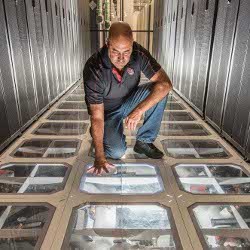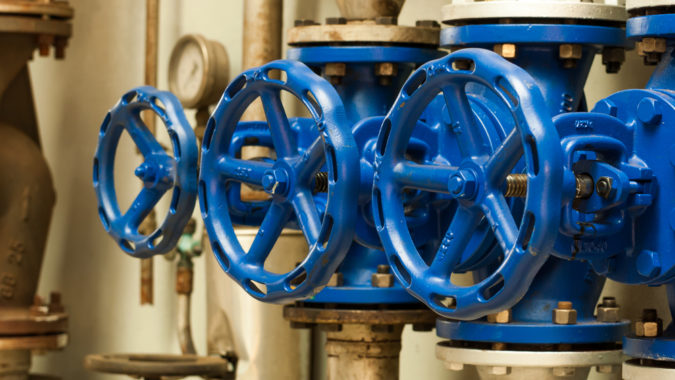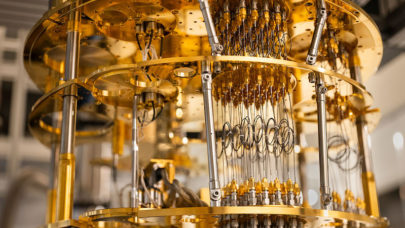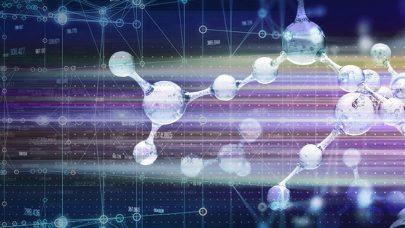Processing the high volumes of water necessary to water cool HPC systems can pose serious difficulties. Now, an engineer from Sandia National Laboratories is being recognized for finding a way to halve the water used by a datacenter at the National Renewable Energy Laboratory (NREL).

Credit: Randy Montoya / Sandia National Laboratory
The engineer is David J. Martinez, project lead for Sandia’s infrastructure computing services, who has 30 years of experience in heating, cooling, and power. Martinez’s method uses a liquid refrigerant instead of water. This eliminates the need for evaporative cooling towers – at least, when the weather outside permits.
The alternative cooling method uses convection, allowing the hot water from the datacenter to convert the refrigerant liquid into a gas, which then rises into a chamber where it is cooled by outside air and re-liquefies. And there’s the catch: the alternative cooling only works if the outside air is no more than a few degrees warmer than the heat emitted by the water.
To account for the times when it’s too hot outside, the system does still use evaporative cooling towers to fill the gaps in cooling. This joint method is complemented by other facility improvements, such as smart fans. This “hybrid thermosyphon cooling” system saved NREL 1.15 million gallons of water last year and is slated to be implemented at Sandia next year, where it is expected to save even more water.
For his work on the thermosyphon system, Martinez received the Department of Energy’s Federal Energy and Water Management Award, which recognizes contributors to energy and water efficiency in the federal government. He shares the award with David Sickinger and Kevin Regimbal of NREL, Tom Carter of Johnson Controls, and Matt Graham of the Department of Energy.
“I like those guys,” Martinez said of NREL. “They’re like me: they push the envelope in saving energy and water.”




























































